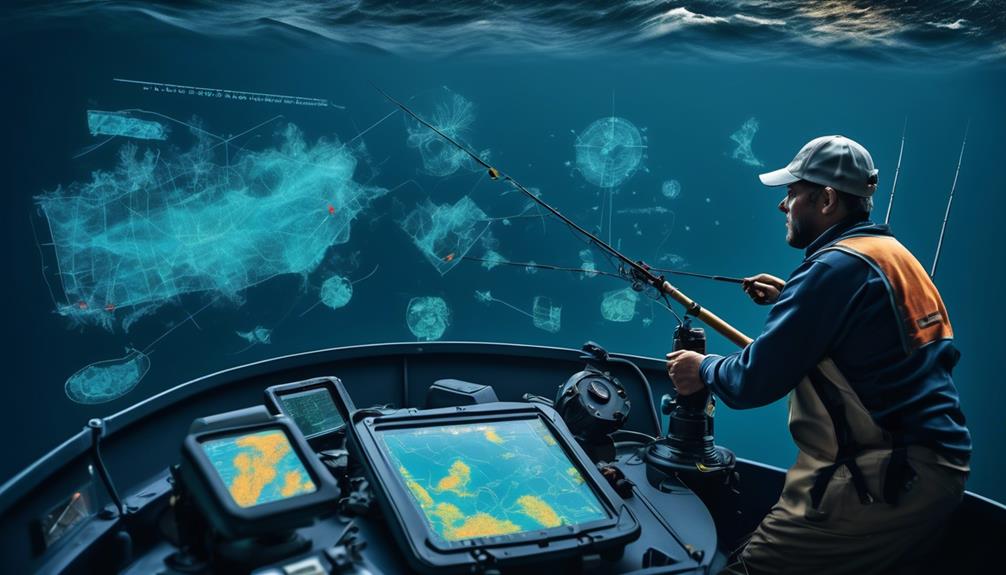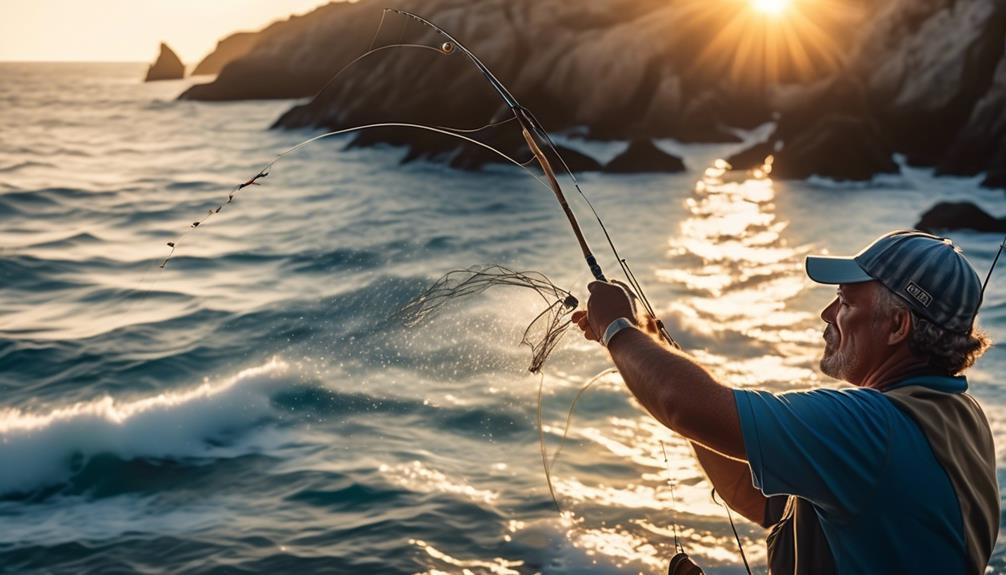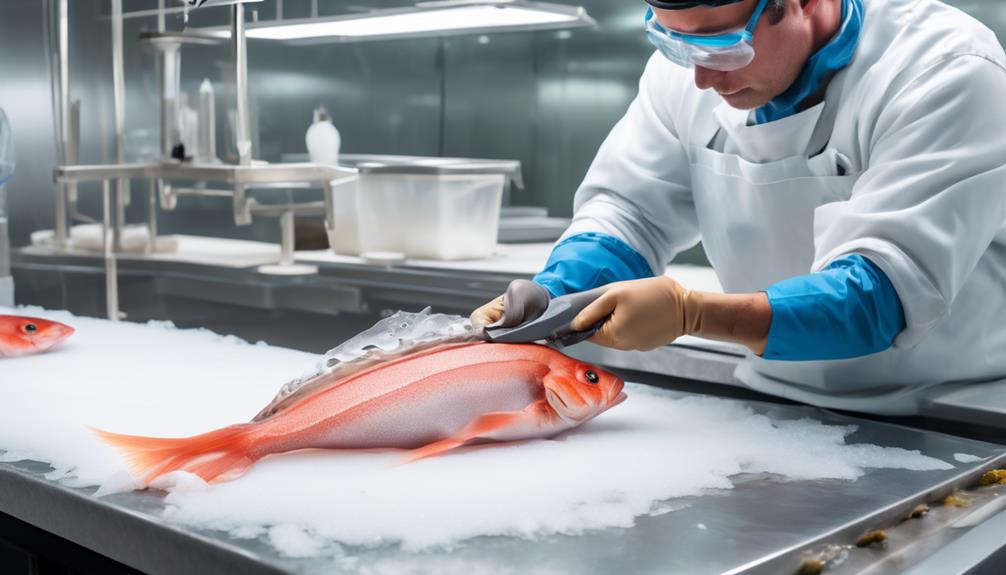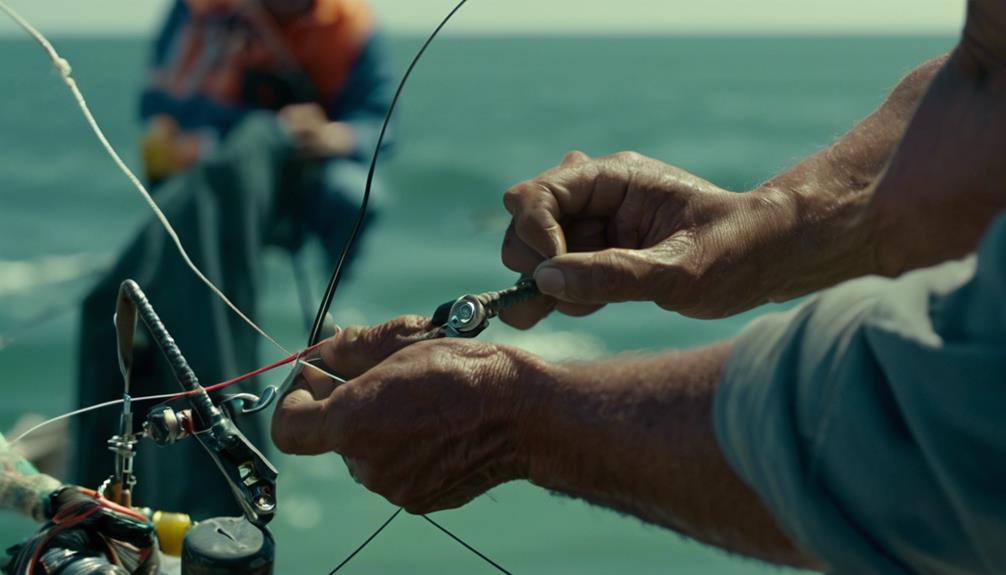When it comes to saltwater fishing, it's like unlocking a treasure chest of possibilities beneath the waves. From mastering the art of casting to understanding the nuances of tides and currents, there's a whole world of techniques and tips waiting to be explored.
But what truly sets apart a successful saltwater angler? How do you navigate the vast ocean and reel in the big catch? It all starts with honing your skills and understanding the intricacies of saltwater fishing.
So, let's dive into the depths of these top techniques and tips that will elevate your saltwater fishing game to new heights.
Best Saltwater Fishing Rods
When selecting the best saltwater fishing rods, durability and flexibility are crucial factors to consider. Saltwater fishing can put a lot of strain on your equipment, so you need a rod that can withstand the corrosive effects of salt and the powerful resistance of ocean-dwelling fish. Look for rods made from materials such as graphite, fiberglass, or a combination of both for the perfect balance of strength and responsiveness.
Graphite rods are lightweight, sensitive, and great for detecting subtle bites, while fiberglass rods are more durable and have greater flexibility, making them ideal for battling larger, hard-fighting fish.
Proper rod maintenance is also essential to keep your saltwater fishing rod in top condition. Rinse your rod with fresh water after each use to remove any salt and debris that could cause corrosion or damage. Inspect the rod guides and reel seat for signs of wear or salt build-up, and clean them as needed. Additionally, store your rods in a cool, dry place to prevent any moisture-related damage.
When it comes to rod materials, graphite rods are excellent choices for their sensitivity and responsiveness, making them ideal for detecting delicate bites and making precise casts. On the other hand, fiberglass rods are known for their durability and flexibility, making them better suited for handling larger, more aggressive saltwater species.
Effective Bait and Lure Selection
To effectively select bait and lures for saltwater fishing, consider the behavior and feeding patterns of the target fish species. Tackle selection plays a crucial role in saltwater fishing success. When choosing bait and lures, it's important to match them to the prevalent water conditions and the behavior of the fish.
For example, if the water is clear and the fish are feeding near the surface, using topwater lures can be highly effective. On the other hand, in murky water or when the fish are holding at deeper depths, diving lures or bait that can be presented at different depths may yield better results.
Understanding hook types is also essential. For instance, when targeting species with hard mouths like snapper or grouper, using strong, durable hooks is imperative to prevent bending or breaking. On the other hand, for species with more delicate mouths, using smaller and finer hooks can increase the likelihood of a successful hookset.
Additionally, consider the feeding behavior of the fish. Some species are known to be more aggressive and may respond well to fast-moving lures, while others are more cautious and may require a slower, more subtle presentation. Matching the size and color of the bait or lure to the prevalent forage in the area can also significantly increase your chances of enticing a bite.
Key Knots and Rigging Techniques
You can enhance your saltwater fishing skills by mastering key knots and rigging techniques essential for securing your bait and lures effectively. Proper knot tying and rigging can make a significant difference in your fishing success, ensuring that your gear holds up against the tough challenges of saltwater fishing.
Here are three key elements to consider when mastering knots and rigging techniques:
- Line Strength and Leader Material: Understanding the appropriate line strength for the species you're targeting and the leader material needed to withstand the abrasive mouths of saltwater fish is crucial. Utilizing the right combination will ensure that your line doesn't break when battling powerful fish.
- Hook Sizes and Sinker Weights: Selecting the correct hook sizes based on the type of bait and the size of the fish you're targeting is essential. Additionally, knowing the appropriate sinker weights to use in different water conditions will help your bait reach the desired depth and stay in place, increasing your chances of a successful catch.
- Proper Bait and Lure Attachment: Mastering the art of securely attaching bait and lures to your line can prevent them from slipping or coming loose during casting or when battling a fish. This can make a significant difference in enticing bites and landing your catch successfully.
Understanding Tides and Currents
Wondering how tides and currents impact saltwater fishing success? Understanding tidal patterns and current behavior is crucial for mastering saltwater fishing.
Tidal patterns play a significant role in determining the movement of baitfish and other prey, which in turn affects the behavior of game fish. When the tide is high, predatory fish may move closer to the shore to feed on the abundance of baitfish that are carried in by the rising waters. Conversely, during low tide, these predatory fish may retreat to deeper waters or seek shelter in structures such as rocks or reefs. As a result, knowing the tidal patterns in the area you're fishing can help you anticipate where the fish are likely to be at different times.
Current behavior also plays a vital role in saltwater fishing. Strong currents can concentrate baitfish in certain areas, attracting predatory fish looking for an easy meal. Understanding how currents move through channels, around points, and along shorelines can help you identify prime fishing spots.
Additionally, being aware of how the current affects your bait or lure presentation is essential for enticing strikes from game fish.
Mastering Casting and Retrieval
Sometimes, mastering the art of casting and retrieval is the key to reeling in a big catch while saltwater fishing. Achieving casting accuracy and mastering line control are crucial skills for any angler.
To improve your accuracy, focus on your target and release the line with a smooth, controlled motion. Keep a firm grip on the rod to maintain control over the line, and always be mindful of wind conditions that can affect your cast.
Additionally, honing your retrieval speed and perfecting your drag setting can make all the difference when trying to lure in that elusive trophy fish. Experiment with different retrieval speeds to see what entices the fish you're targeting, and don't be afraid to adjust your drag setting to match the fight of the fish.
Lastly, staying patient and observant is key in mastering the art of casting and retrieval. Pay attention to the behavior of the fish and adapt your techniques accordingly. Remember, the thrill of the catch is often in the details, and becoming proficient in casting and retrieval will undoubtedly lead to more successful fishing experiences.
Keep honing your skills, and soon enough, you'll be pulling in those impressive saltwater catches with ease.
Tips for Fighting and Landing Fish
To increase your chances of successfully landing a fish while saltwater fishing, it's essential to maintain a strong and steady tension on the line throughout the fight. When you feel a fish biting, resist the urge to immediately set the hook. Instead, allow the fish to take the bait for a moment before smoothly raising your rod tip to set the hook. This method helps to ensure a solid hook set, reducing the risk of the fish shaking loose during the fight.
During the fight, it's crucial to keep the line tight and maintain pressure on the fish. This will help tire out the fish and prevent it from making sudden runs that could lead to a snapped line. Keep the rod tip up and use smooth, controlled motions to guide the fish towards you. If the fish makes a strong run, allow the drag on your reel to give a little, preventing the line from breaking.
As the fish nears the boat or shore, be prepared to adjust your movements to prevent the line from getting tangled in structures or vegetation. Keep the pressure on and be patient. Once the fish is within reach, use a landing net or carefully guide it to shore, ensuring a successful catch.
Locating Fish Hotspots

When fishing in saltwater, identifying fish hotspots relies on keen observation of water movement and structure, as well as understanding the behavior of different species. Fish behavior plays a crucial role in determining where they congregate, so it's essential to pay attention to their habits and preferences. Additionally, local knowledge provided by experienced fishermen can offer valuable insights into the best hotspots for specific species.
Observing the way fish interact with their environment can be incredibly rewarding. It allows you to witness nature in action and gain a deeper appreciation for the marine ecosystem.
Learning from local fishermen who've spent years on the water can provide a sense of community and connection to the area. Their wisdom and stories can enrich your fishing experience and make it more memorable.
Understanding fish behavior can lead to a more successful and fulfilling fishing trip. The satisfaction of applying your knowledge and skills to locate fish hotspots is a deeply gratifying experience.
Safety Precautions for Saltwater Fishing
After familiarizing yourself with the prime fishing spots and gaining insight from experienced locals, prioritizing safety precautions is essential for a successful saltwater fishing expedition. When heading out for saltwater fishing, always ensure that you have a well-equipped emergency response plan. This includes carrying essential safety gear such as life jackets, a first aid kit, and a communication device in case of emergencies. It's crucial to be prepared for any unforeseen circumstances that may arise during your fishing trip.
Boat navigation is another critical aspect of safety to consider. Before setting sail, thoroughly check the condition of your boat and ensure that all navigation equipment, such as GPS, compass, and nautical charts, are in good working order. It's also important to familiarize yourself with the local waterways and potential hazards, such as shallow areas, rocks, or strong currents. Always adhere to maritime rules and regulations to avoid any accidents or collisions with other vessels.
In the event of an emergency, staying calm and implementing your emergency response plan is vital. If someone falls overboard, immediately initiate rescue procedures and provide assistance. Familiarize yourself with basic first aid techniques and be prepared to administer aid if necessary. Additionally, always keep a close eye on weather conditions and be ready to head back to shore if a storm approaches. Prioritizing safety precautions ensures that you can enjoy your saltwater fishing experience while minimizing potential risks.
Frequently Asked Questions
How Can I Prevent Seasickness While Saltwater Fishing?
To prevent seasickness while saltwater fishing, try natural remedies like ginger or medications such as Dramamine. Also, consider using breathing techniques and acupressure points to alleviate symptoms. Stay hydrated and keep your eyes on the horizon.
What Are the Best Practices for Catch and Release in Saltwater Fishing?
To ensure ethical release and proper handling in saltwater fishing, practice responsible angling for conservation efforts. Use barbless hooks, minimize air exposure, and handle fish gently. Support sustainable catch and release practices for healthy marine ecosystems.
How Do I Properly Maintain My Saltwater Fishing Gear to Ensure Longevity?
To properly maintain your saltwater fishing gear, clean it regularly to ensure longevity. Regular cleaning and proper equipment care will help prevent corrosion and damage, keeping your gear in top condition for many fishing trips.
Are There Any Regulations or Restrictions I Should Be Aware of When Saltwater Fishing?
When saltwater fishing, it's important to be aware of fishing regulations and conservation efforts. Check local guidelines for size limits, bag limits, and restricted areas. Support conservation by following rules and practicing catch and release when possible.
What Are Some Tips for Handling and Safely Releasing Larger Saltwater Fish Species?
When handling larger saltwater fish, use proper techniques to keep them safe and minimize harm. Support the fish in the water until it revives and swims off. Avoid lifting by the gills or placing on dry surfaces.
Conclusion
So there you have it – the top saltwater fishing techniques and tips to help you become a successful angler.
Remember to choose the best rods, use effective bait and lures, master your knots and rigging techniques, understand tides and currents, and always be safe on the water.
With these skills and knowledge, you'll be well on your way to reeling in some impressive saltwater catches.
Happy fishing!



